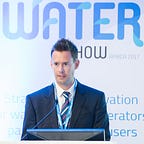Green Economy, Green Growth
The United Nations Environment Programme (UNEP) defines the green economy as one that results in ‘improved human well-being and social equity, while significantly reducing environmental risks and ecological scarcities’. In its simplest form, a green economy is low carbon, resource efficient, and socially inclusive.
In this type of economy, growth in income and employment are driven by both public and private investments that reduce carbon emissions, enhance resource efficiency, and prevent the loss of biodiversity and ecosystem services.
A key component of this economy is that economic development views natural capital as a key economic asset and as a source of public benefit. The overall aim of a transition towards a green economy is to enable economic growth and investment while increasing environmental quality and social inclusiveness.
Overall, the green economy is one that results in improved human well-being and social equity, while significantly reducing environmental risks and ecological scarcities.
Green growth
In the traditional economic model, the benefits of growth were gained at the expense of the environment. The green paradigm indicates that the previous approach to growth, such as polluting and degrading the environment first and then cleaning up and restoring the environment afterwards, must be sus- pended. Instead, a new path should advocate sustainable development that protects the environment.
Green growth has emerged as a new development paradigm to respond to the traditional unsustainable energy and carbon-intensive models that are based on economic growth without consideration for the environment. According to the OECD, green growth is about fostering economic growth and development while ensuring that natural assets continue to provide the resources and environmental services on which our well-being relies. ‘To do this, green growth must catalyse investment and innovation which will underpin sustained growth and give rise to new economic opportunities’.
A variety of characteristics attributed to green growth include:
- More effective use of natural resources in economic growth
- Valuing ecosystems
- Inter-generational economic policies
- Increased use of renewable sources of energy
- Protection of vital assets from climate-related disasters
- Reduced waste of resources
Pillars of the green economy and green growth
The green economy and green growth aim to achieve three objectives:
- Improving resource-use efficiency: a green economy is one that is effi- cient in its use of energy, water, and other material inputs
- Ensuring ecosystem resilience: it also protects the natural environ- ment, its ecosystems, and ecosystem flows.
- Enhancing social equity: it promotes human well-being and a fair bur- den sharing across societies.
The take-out
The green economy seeks to achieve, in a balanced manner, economic development, social development, and environmental protection.
Click here to join the Our Future Water Network. Be part of the community.
Join the conversation on the following LinkedIn groups: Urban Water Security, Our Future Water, Circular Water Economy, Blue-Green Infrastructure, Nature-Based Solutions, and Urban and Regional Futures
Read the latest issue of Mark and Focus on healthy, smart, and resource-efficient cities and societies on Issuu or Apple Books or download here
